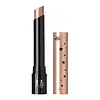What's inside
What's inside
 Key Ingredients
Key Ingredients

 Benefits
Benefits

 Concerns
Concerns

No concerns
 Ingredients Side-by-side
Ingredients Side-by-side

Water
Skin ConditioningCalcium Aluminum Borosilicate
Propanediol
SolventSynthetic Fluorphlogopite
Chondrus Crispus
MaskingCalcium Sodium Borosilicate
Pentylene Glycol
Skin ConditioningSaccharide Isomerate
HumectantHydroxyacetophenone
AntioxidantTetrasodium Glutamate Diacetate
Calcium Chloride
AstringentCaprylyl Glycol
Emollient1,2-Hexanediol
Skin ConditioningTin Oxide
AbrasiveSodium Citrate
BufferingCitric Acid
BufferingTitanium Dioxide
Cosmetic ColorantWater, Calcium Aluminum Borosilicate, Propanediol, Synthetic Fluorphlogopite, Chondrus Crispus, Calcium Sodium Borosilicate, Pentylene Glycol, Saccharide Isomerate, Hydroxyacetophenone, Tetrasodium Glutamate Diacetate, Calcium Chloride, Caprylyl Glycol, 1,2-Hexanediol, Tin Oxide, Sodium Citrate, Citric Acid, Titanium Dioxide
Water
Skin ConditioningMethylpropanediol
SolventCalcium Aluminum Borosilicate
Synthetic Fluorphlogopite
Sodium Stearate
CleansingGlycerin
HumectantSorbitan Isostearate
Emulsifying1,2-Hexanediol
Skin ConditioningGlyceryl Stearate
EmollientSodium Chloride
MaskingPEG-100 Stearate
Caprylyl Glycol
EmollientCopernicia Cerifera Cera
EmollientTin Oxide
AbrasiveCeteareth-20
CleansingCitric Acid
BufferingEthylhexylglycerin
Skin ConditioningDimethicone
EmollientSteareth-100
Gel FormingPhenoxyethanol
PreservativeHexylene Glycol
EmulsifyingTocopherol
AntioxidantCI 77491
Cosmetic ColorantCI 77891
Cosmetic ColorantCI 77510
Cosmetic ColorantWater, Methylpropanediol, Calcium Aluminum Borosilicate, Synthetic Fluorphlogopite, Sodium Stearate, Glycerin, Sorbitan Isostearate, 1,2-Hexanediol, Glyceryl Stearate, Sodium Chloride, PEG-100 Stearate, Caprylyl Glycol, Copernicia Cerifera Cera, Tin Oxide, Ceteareth-20, Citric Acid, Ethylhexylglycerin, Dimethicone, Steareth-100, Phenoxyethanol, Hexylene Glycol, Tocopherol, CI 77491, CI 77891, CI 77510
Ingredients Explained
These ingredients are found in both products.
Ingredients higher up in an ingredient list are typically present in a larger amount.
1,2-Hexanediol is a synthetic liquid and another multi-functional powerhouse.
It is a:
- Humectant, drawing moisture into the skin
- Emollient, helping to soften skin
- Solvent, dispersing and stabilizing formulas
- Preservative booster, enhancing the antimicrobial activity of other preservatives
Calcium Aluminum Borosilicate is made up of calcium, aluminum, and silicates. It is a glass-like material. In cosmetics, it comes in the form of flakes or microspheres.
Calcium aluminum borosilicate is a bulking agent, meaning it helps thicken a product.
This ingredient is created by slowly mixing several minerals, including kaolin clay.
Although “aluminum” in an ingredient name can raise red flags for some consumers, the form and usage context matter significantly. For typical topical applications, there is no substantial evidence of health risks - such as cancer, neurotoxicity, or systemic “aluminum overload.”
Learn more about Calcium Aluminum BorosilicateCaprylyl Glycol is a humectant and emollient, meaning it attracts and preserves moisture.
It is a common ingredient in many products, especially those designed to hydrate skin. The primary benefits are retaining moisture, skin softening, and promoting a healthy skin barrier.
Though Caprylyl Glycol is an alcohol derived from fatty acids, it is not the kind that can dry out skin.
This ingredient is also used as a preservative to extend the life of products. It has slight antimicrobial properties.
Learn more about Caprylyl GlycolCitric Acid is an alpha hydroxy acid (AHA) naturally found in citrus fruits like oranges, lemons, and limes.
Like other AHAs, citric acid can exfoliate skin by breaking down the bonds that hold dead skin cells together. This helps reveal smoother and brighter skin underneath.
However, this exfoliating effect only happens at high concentrations (20%) which can be hard to find in cosmetic products.
Due to this, citric acid is usually included in small amounts as a pH adjuster. This helps keep products slightly more acidic and compatible with skin's natural pH.
In skincare formulas, citric acid can:
While it can provide some skin benefits, research shows lactic acid and glycolic acid are generally more effective and less irritating exfoliants.
Most citric acid used in skincare today is made by fermenting sugars (usually from molasses). This synthetic version is identical to the natural citrus form but easier to stabilize and use in formulations.
Read more about some other popular AHA's here:
Learn more about Citric AcidSynthetic Fluorphlogopite is the synthethic version of mica. It consists of fluorine, aluminum and silicate.
Synthetic Fluorphlogopite is used to add volume to products.
It is considered non-irritating on the skin.
Learn more about Synthetic FluorphlogopiteTin Oxide is an inorganic oxide used to add opacity and volume to a product. In nature, it is already found in mineral form. The main ore of tin is an opaque and shiny mineral called casseterite.
Tin Oxide helps remove translucency in a product, or make it more opaque. Besides adding opacity, tin oxide is used for bulking to add volume.
Water. It's the most common cosmetic ingredient of all. You'll usually see it at the top of ingredient lists, meaning that it makes up the largest part of the product.
So why is it so popular? Water most often acts as a solvent - this means that it helps dissolve other ingredients into the formulation.
You'll also recognize water as that liquid we all need to stay alive. If you see this, drink a glass of water. Stay hydrated!
Learn more about Water